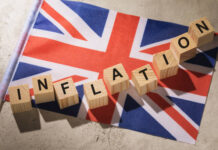Markets
US markets are closed today for Martin “I have a dream” Luther King Day. That brought Europe at the center of attention today and that’s what we’ll do in this report as well. Our angle is German, as the country reported a first, very early estimate of growth in 2023. The Federal Statistic’s Office (Destatis) reported GDP to be -0.3% lower last year than in 2022. Elevated prices put a damper on economic growth, as did unfavourable financing conditions due to rising interest rates and weaker domestic and foreign demand. In the sectoral divide, industry (ex. construction) contracted 2% while most service branches expanded their economic activities, be it at a weaker pace than in the two preceding years. Construction saw a modest 0.2% growth. Household consumption was down 0.8% in the expenditure based approach, with the statistics office citing high consumer prices as the key reason for this. Gross fixed capital formation tanked 2.1%. Trade supported the economy but only because imports experienced a greater contraction (-3%) than exports (-1.8%). From the yearly estimate, Destatis also derived a first preliminary Q4 quarterly reading at -0.3%. Because of an upward revision to Q3 growth from -0.1% to +0.1%, Germany did avoid a technical recession. It’s a meager consolation to what is the first contraction over a full 12 months since the pandemic and (one of) the weakest performances in the landscape of major advanced economies.
We switch from the economy to monetary policy. Central bank interviews in the sidelines of the WEF in Davos already prove interesting. ECB’s/Buba’s Nagel questioned by Bloomberg said it’s too early to talk about rate cuts as inflation is still too high. He called markets over-optimistic and suggested the ECB can wait for the summer break before mulling cuts. Holzmann joined his hawkish colleague a bit later and took it even further. The Austrian policy member said one shouldn’t count on rate cuts at all in 2024, even as the economy has disappointed. He referred a.o. to the geopolitical situation in which the Houthi rebel threat in the Red Sea region could boost inflation anew. Both ECB policymakers reinforced the earlier German yield rise, leading to changes between +5.4 (30-y) and +7.6 bps (2-y). Euro area money markets still discount 150 bps of rate cuts by end 2024 though. The euro is doing pretty well against major peers in FX space. But an equally solid dollar bid is keeping EUR/USD locked in the mid 1.09/1.10 area. European stocks slip about half a percent but JPY is unable to profit from that minor risk off with the rise in core rates weighing more heavily. USD/JPY bounces to 145.86, EUR/JPY to 159.66.
News & Views
Statistics Sweden reported inflation in December to have slowed slightly less than expected. Headline inflation still rose 0.7% M/M but positive base effects allowed the Y/Y measure to decline from 5.8% to 4.4% (4.3% was expected). CPIF inflation (with fixed interest rates), the preferred target measure of the Riksbank, printed at 0.6% M/M and 2.3% Y/Y (from 3.6%). Core CPIF inflation excluding energy remains high at 0.7% M/M and 5.3% Y/Y (from 5.4%). The decline in headline inflation was mainly due to significantly lower electricity prices compared to December 2022. The interest rates for household’s mortgages rose substantially Y/Y and contributed with 2.3 percentage points to annual CPI inflation. Regarding the monthly dynamics, price rises still remained broad-based. Prices for clothing and footwear rose 2.8% M/M, housing and utilities added 1.1%. Healthcare and medicine as well as prices for transportation rose 0.8% compared to November. The Riksbank in its end November forecasts left the door open for an additional rate hike, but recent comments of MPC members suggested that this won’t be necessary. Even so, higher core inflation might delay a first Riksbank rate cut to the August meeting rather than a first step in May or June. Any SEK gains post the release were limited and short-lived. EUR/SEK currently trades little changed near 11.27.














